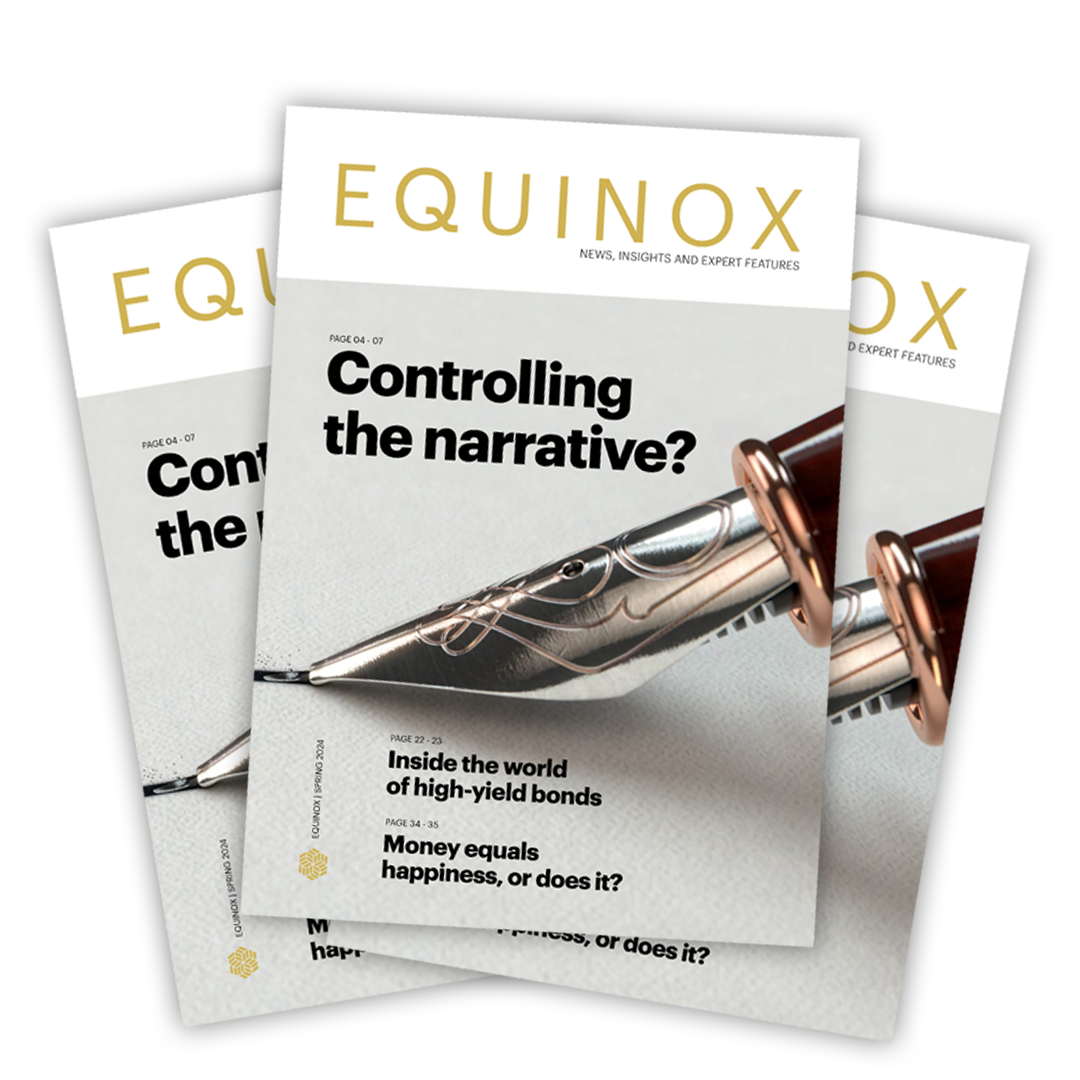Executive summary
- The 10-year US government bond yield recently hit 5% p.a.
- If you had bought the bond at that level and you hold it to maturity you can expect a total return of c.50% (5% p.a. x 10 years) over the next decade.
- However, in the short term the price of the bond could go up or down.
- We can get headline returns of 10%+ on defined returns at present.
- That means, very simply we could put 50% of a portfolio in government bonds and 50% in defined returns, to target a 7.5% p.a. gross return (in line with our long-term targets) with a relatively high degree of certainty.
- However, we don’t want to just do that as we’d likely miss out on higher returns in the short term. Other bonds yield more than Treasuries, whilst we think stock markets may go up more than defined returns in the short term.
Many asset classes have dropped back recently due to changing interest rate expectations. After a decent rally earlier in the year, equities have fallen back somewhat, along with bonds, and real assets like property or infrastructure.
For example, the 10-year US Treasury yield recently went up to 5% p.a. after the price fell (although the yield has dropped back slightly since) (Source: LSEG Datastream).
Whilst price falls are frustrating, this does increase the future return. The higher yield meant that you could lend your money to the American government and receive 5% over the next 10 years, guaranteed by the US Treasury.
This is pretty attractive in our view. The ability to lock in today’s relatively high interest rates for the next decade would give a great deal of certainty around returns in what feels like quite an uncertain world.
However, whilst this is the return you would receive over a decade, it doesn’t mean it couldn’t be very volatile in the meantime.
Perhaps the best way to think of it is not as 5% p.a. for 10 years, but a total return of 50% (ignoring compounding) which you’ll only receive when the bond matures.
If interest rates go up more than expected over the next year, the price of the bond could go down.
In a moderately negative scenario, let’s imagine that your total return is zero over the next 12 months, with a 5% capital loss wiping out all the yield for the year.
You should now expect your 50% return over nine years rather than ten, equivalent to 5.55% p.a.
Or imagine an extreme scenario where you get a return of zero from this bond for the first five years. We can’t really imagine a situation where this occurs, but just for the sake of argument…!
Over the second five years you would then get 10% p.a.
The point is that the long-term return is known, it’s just the short-term returns we can’t predict.
Fifty-fifty
We can currently get rates on defined returns of 10% or more based just on the FTSE 100, and more than 12% if we base them on both the FTSE and the S&P 500.
These are typically five-year products, which will kick out on one of the first five anniversary dates should the market(s) be at or above their starting levels on that date.
Suppose we choose the 10% FTSE-only product which is the less risky option.
In theory, we could put 50% in government bonds at 5%, 50% into defined returns at 10%, and therefore would expect to achieve c.7.5% p.a. over the long term with a high degree of certainty (again this ignores compounding).
If inflation was 2.5% p.a., this would give us a 5% return in real terms (gross of fees and tax etc).
Again, the market could go down in the short term, but as long as it recovered back above its starting level before the maturity date, we still get the headline returns.
So why don’t we just do this?
We have increased government bond and defined returns exposure. However, we’re not putting the whole portfolio in these assets.
On the bond side, corporate bonds give a higher yield than government bonds, even up to double digit yields for the less credit-worthy companies. This makes us believe these should return more than government bonds over the long term.
On the other half of the portfolio, one issue with defined returns is they cap your upside. We think there’s a good chance markets could go up significantly MORE than 10% p.a. over the next couple of years.
In that scenario the defined returns would still only give you the fixed returns. We would also have “reinvestment risk” as defined returns would kick out and we’d have to buy something else, potentially at a lower rate.
Defined returns are not entirely without risk either. There is credit risk as we’re lending money to a bank, so we normally limited exposure to a single bank to 5% of portfolios. Also, whilst unlikely in our view – markets might go down over five years. If so, we just get our money back unless the market is down more than 40%. For example, if the market was down 45%, we’d lose 45% – however markets have never dropped as much as this in past five-year periods.
In the short term, markets remain very volatile, and changing expectations for interest rates have again, caused pretty much every asset class to drop recently.
We can’t predict the short term, but we realise how frustrating the last few years have been and how sometimes a little certainty can be worth a lot.
However, what has happened only increases our confidence in future long-term returns. After some sharp falls, certain assets look very attractive in our view. It would not be a sensible move to sell those after suffering the losses, at valuations where historically we’ve seen some very good returns.
This update is intended as an information piece and does not constitute a solicitation of investment advice.
Past performance is for illustrative purposes only and cannot be guaranteed to apply in the future.
If you have any further questions, please don’t hesitate to contact us. If you’re a client you can reach us on 0161 486 2250 or by getting in touch with your usual Equilibrium contact. For all new enquiries please call 0161 383 3335.



